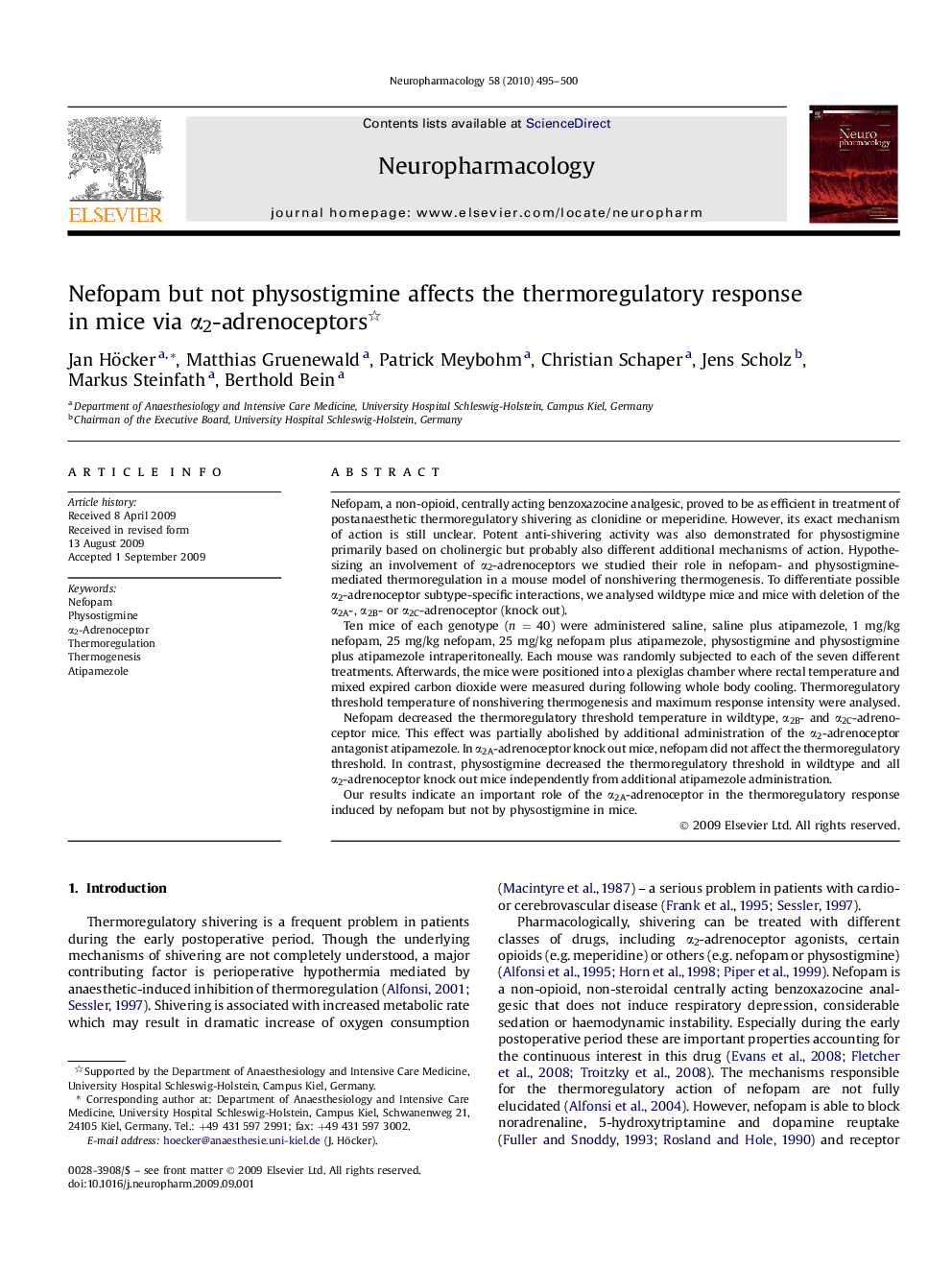| Article ID | Journal | Published Year | Pages | File Type |
|---|---|---|---|---|
| 2494333 | Neuropharmacology | 2010 | 6 Pages |
Nefopam, a non-opioid, centrally acting benzoxazocine analgesic, proved to be as efficient in treatment of postanaesthetic thermoregulatory shivering as clonidine or meperidine. However, its exact mechanism of action is still unclear. Potent anti-shivering activity was also demonstrated for physostigmine primarily based on cholinergic but probably also different additional mechanisms of action. Hypothesizing an involvement of α2-adrenoceptors we studied their role in nefopam- and physostigmine-mediated thermoregulation in a mouse model of nonshivering thermogenesis. To differentiate possible α2-adrenoceptor subtype-specific interactions, we analysed wildtype mice and mice with deletion of the α2A-, α2B- or α2C-adrenoceptor (knock out).Ten mice of each genotype (n = 40) were administered saline, saline plus atipamezole, 1 mg/kg nefopam, 25 mg/kg nefopam, 25 mg/kg nefopam plus atipamezole, physostigmine and physostigmine plus atipamezole intraperitoneally. Each mouse was randomly subjected to each of the seven different treatments. Afterwards, the mice were positioned into a plexiglas chamber where rectal temperature and mixed expired carbon dioxide were measured during following whole body cooling. Thermoregulatory threshold temperature of nonshivering thermogenesis and maximum response intensity were analysed.Nefopam decreased the thermoregulatory threshold temperature in wildtype, α2B- and α2C-adrenoceptor mice. This effect was partially abolished by additional administration of the α2-adrenoceptor antagonist atipamezole. In α2A-adrenoceptor knock out mice, nefopam did not affect the thermoregulatory threshold. In contrast, physostigmine decreased the thermoregulatory threshold in wildtype and all α2-adrenoceptor knock out mice independently from additional atipamezole administration.Our results indicate an important role of the α2A-adrenoceptor in the thermoregulatory response induced by nefopam but not by physostigmine in mice.
